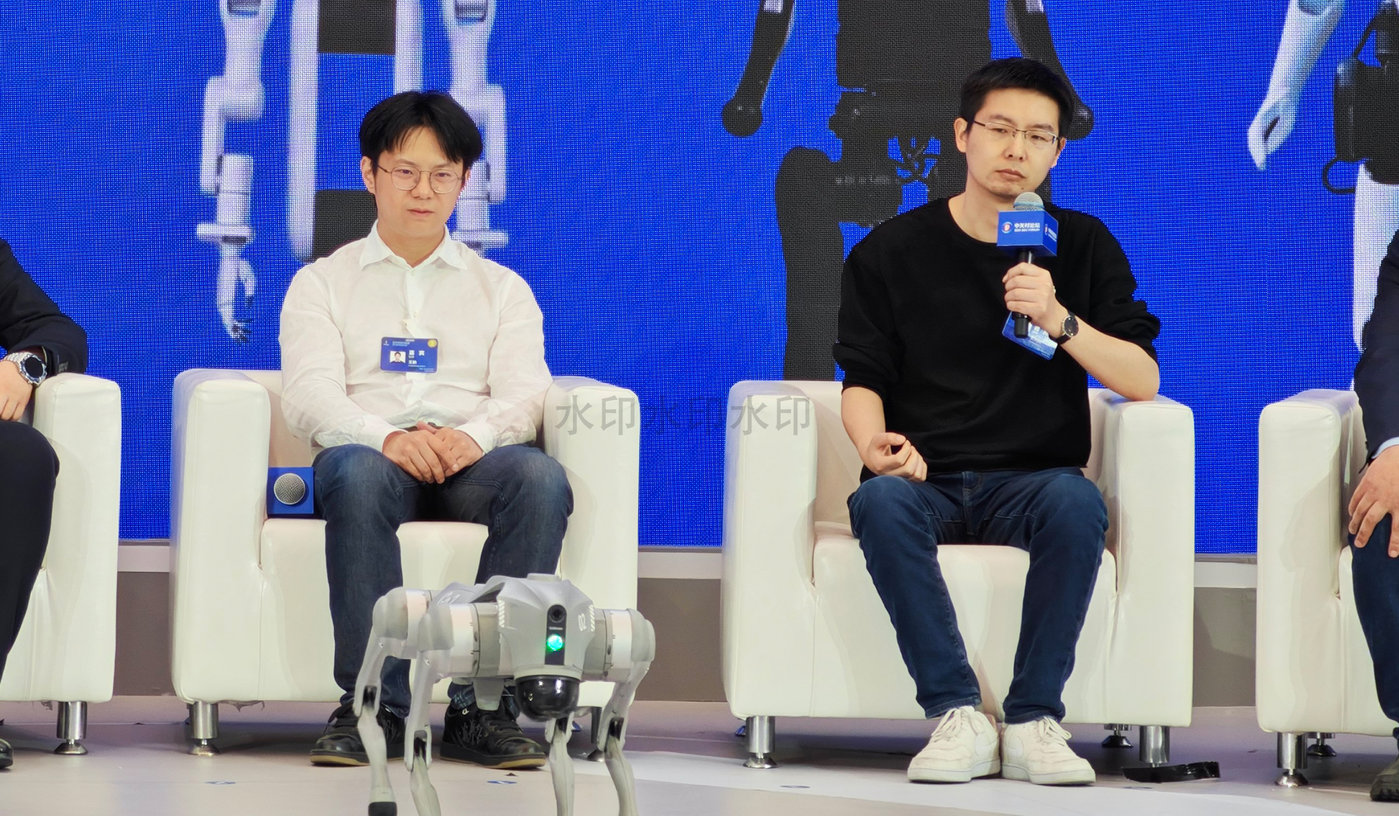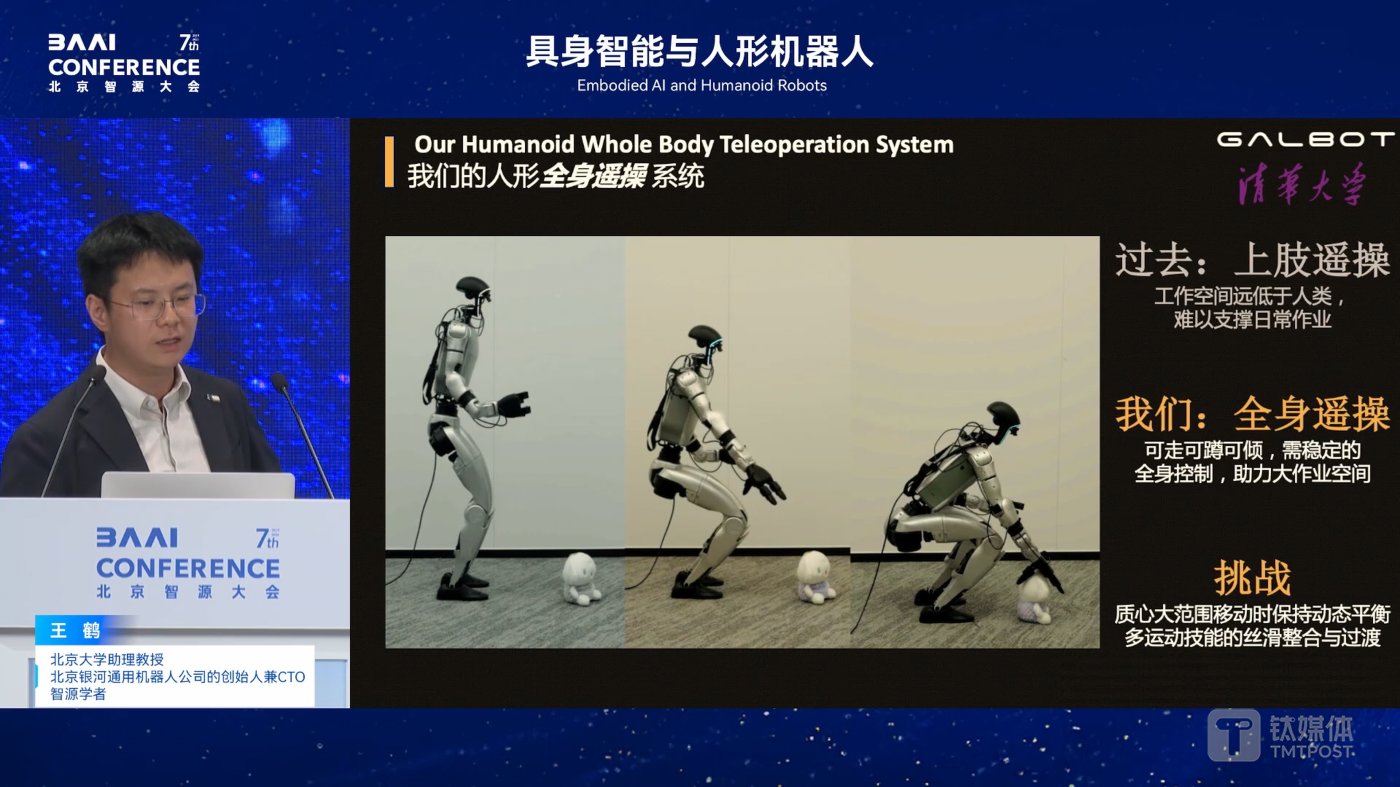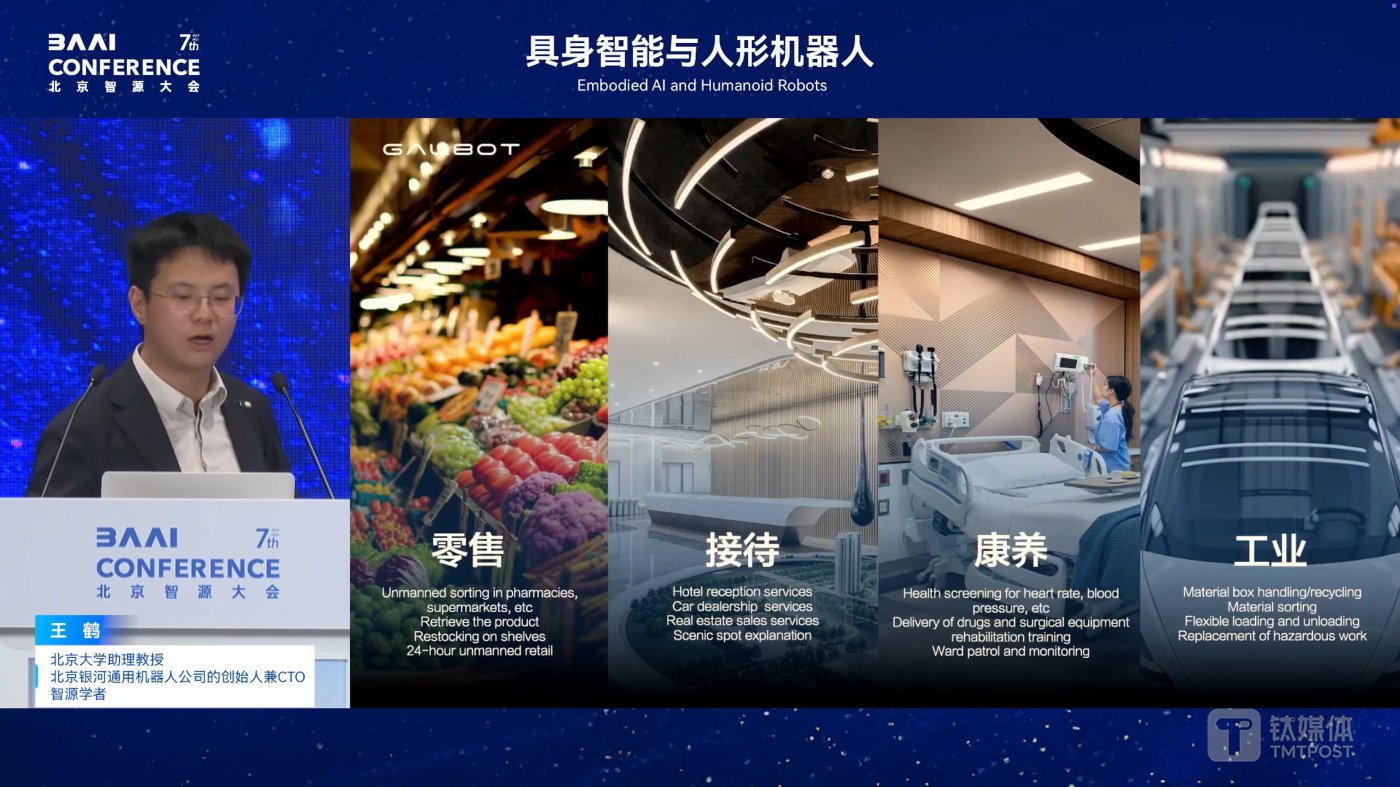
Left: Wang He, Co-founder and CTO of GALBOT; Right: Wang Xingxing, Founder and CEO of Unitree Robotics
TMTPOST -- Beijing-based GALBOT Robotics has secured RMB 1.1 billion (approximately $150 million) in fresh funding, marking the largest-ever single-round investment in China』s fast-growing humanoid robotics and embodied intelligence sector.
The round was led by CATL Capital—the investment arm of battery giant Contemporary Amperex Technology—and Puquan Capital, with participation from Beijing Robotics Industry Fund, CDB Sci-Tech Innovation Fund, and GGV Capital, the company said in a statement Monday.
Founded just two years ago, GALBOT has now raised over RMB 2.4 billion ($330 million) in total, making it one of the most well-funded players in China』s AI robotics boom.
Co-founder and CTO Wang He, also a professor at Peking University and director of the Embodied Intelligence Research Center at the Beijing Academy of AI, said the company became a billion-dollar unicorn in the first half of 2025. Revenue this year is projected to reach several hundred million yuan, driven by high-value deployments in logistics and retail.
「Our units sell for several hundred thousand yuan each, but can replace three shifts of labor over three years,」 Wang said. 「We are advancing the industrialization of embodied intelligence.」
In March, the company launched the world』s first humanoid robot-powered smart retail solution. Its dual-arm, wheeled robot Galbot can fully automate operations in a 50-square-meter unmanned store—handling 5,000 SKUs and 6,000 storage slots without human intervention. Ten stores in Beijing have already gone live, with plans for 100 more by year-end.

GALBOT is also collaborating with global industrial powerhouse Bosch, having signed a strategic MoU with Bosch China and Bosch Ventures on June 17 to push humanoid robotics into industrial manufacturing scenarios worldwide. The trio also launched a joint venture to commercialize and scale production.
The company recently debuted OpenWBT, the world』s first fully open-source teleoperation system for humanoid robots, developed with Tsinghua University. It also rebuilt its Galbot system using an end-to-end Vision-Language-Action (VLA) model, improving generalization while eliminating the need for small 3D model dependencies.
GALBOT』s technical roadmap shows growing convergence with Unitree Robotics, another prominent Chinese robotics firm. The company』s foundational model QuadWBG, jointly developed with Peking University, the University of Toronto, and Zhiyuan Research Institute, has been integrated with Unitree』s quadruped robots for full-body reinforcement learning.
OpenWBT has also been tested on Unitree』s humanoid platforms, and Wang He』s early academic research focused heavily on Unitree』s robotic dogs. Adding fuel to speculation, one of GALBOT』s early investors, Yin Fangming, was also the first investor in Unitree and remains tied to the company through indirect holdings.
Insiders say GALBOT is widely viewed as an incubated project of Yin, a former engineer at MediaTek who later founded AI startup ROOBO and played a pivotal role in the early growth of both Unitree and Galaxy.
While much of the humanoid robotics industry remains in the prototype phase, analysts say Galaxy』s strong industrial links and strategic backers set it apart as a front-runner in turning research into revenue.
Wang He believes that use cases like front-end warehousing and automotive component sorting could see shipment volumes in the hundreds of thousands, rivaling the global industrial robot market—estimated at $100 billion in annual value.

Still, he warns that scaling will require tens of billions of data points to train generalized embodied intelligence models, and that data scarcity remains a bottleneck. 「We are transitioning from 『demos』 to 『deployment』—but it』s a fierce race,」 Wang said.
According to Gaogong Robotics, China will ship 2,400 humanoid robots in 2024, with the number expected to triple to 7,300 next year, reaching a market value of RMB 2.4 billion. By 2035, the figure may surge to 2 million units and RMB 140 billion.
Bloomberg Intelligence projects that China will account for more than half of all humanoid robot production globally this year.
A UBS report forecasts that 2 million humanoid robots will be deployed worldwide by 2035, reaching 300 million by 2050, alleviating labor shortages in industries ranging from logistics to elder care. Meanwhile, Citigroup estimates the global humanoid robot market will swell to $7 trillion by mid-century.
「We』re entering the productivity era of humanoid robots,」 said Wang. 「In three years, 10,000 robots could be working autonomously in tough environments that humans can』t sustain for 24 hours. We』re just getting started.」
